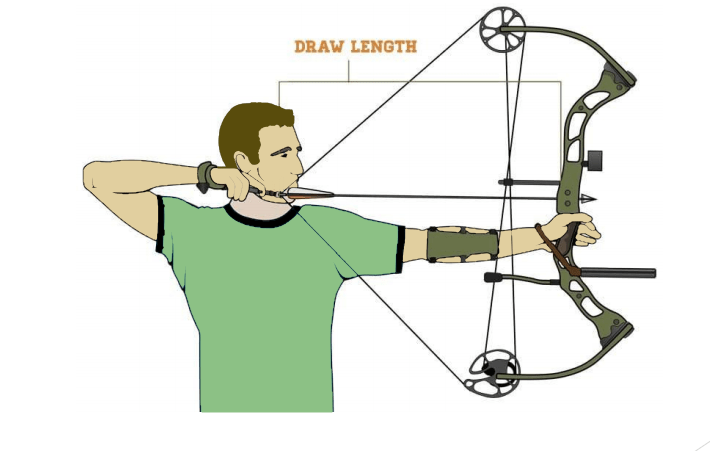A Beginner's Guide to Traditional Archery

Authors:Murat KANDİL
Outline of the Article:
- Introduction to Traditional Archery
- What is traditional archery?
- Brief history of traditional archery.
- Equipment Needed
- Bow types (longbow, recurve, etc.).
- Arrow types (wooden, carbon, etc.).
- Additional gear (armguards, finger tabs, etc.).
- Choosing the Right Bow
- Factors to consider (draw weight, bow length, etc.).
- Testing different bows.
- Understanding Arrows
- Components of an arrow (shaft, fletching, nock).
- Matching arrows to your bow.
- Proper Shooting Technique
- Stance and posture.
- Nocking the arrow.
- Drawing and anchoring.
- Aiming and releasing.
- Safety Precautions
- Importance of safety in archery.
- Protective gear.
- Practicing Accuracy
- Setting up targets.
- Drills to improve aim.
- Maintaining Your Gear
- Cleaning and storing your bow and arrows.
- Checking for damage.
- Joining a Community
- Benefits of joining archery clubs or groups.
- Finding local resources.
- Getting Started with Traditional Archery
- Taking beginner classes.
- Starting with basic equipment.
- Common Mistakes to Avoid
- Flinching.
- Gripping the bow too tightly.
- Overdrawing.
- Understanding Different Archery Styles
- Target archery.
- Field archery.
- 3D archery.
- Building Strength and Stamina
- Exercises to improve archery performance.
- Importance of physical fitness.
- Setting Goals and Tracking Progress
- Establishing achievable goals.
- Monitoring improvement over time.
- Conclusion
- Recap of key points.
- Encouragement for beginners to continue their journey in traditional archery.
A Beginner's Guide to Traditional Archery
Introduction to Traditional Archery
Traditional archery is a timeless art that has been practiced for centuries. Unlike modern compound bows, traditional archery relies on simpler equipment, such as recurve bows or longbows, and wooden arrows. It's a discipline that connects practitioners to history and nature, offering a unique experience that combines skill, precision, and appreciation for the outdoors.
Equipment Needed
When starting with traditional archery, it's essential to have the right equipment. The primary items include the bow, arrows, and additional gear like armguards and finger tabs. Traditional bows come in various types, each with its own advantages and characteristics. Recurve bows are popular for their versatility, while longbows offer a classic design and smooth shooting experience. Wooden arrows are commonly used in traditional archery, providing authenticity and a satisfying "thwack" when hitting the target.
You can buy the arrow in this blog photo from this link:https://hoodarcheryshop.com/en/medieval-bamboo-traditional-wooden-hunting-archery-arrow-for-recurve-longbow-bow-shoot-with-white-turkey-feathers
Choosing the Right Bow
Selecting the right bow is crucial for a beginner. Factors such as draw weight, bow length, and hand dominance play a role in determining the most suitable bow for an individual. It's recommended to test different bows to find the one that feels comfortable and matches your shooting style.
Understanding Arrows
Arrows consist of several components, including the shaft, fletching, and nock. Understanding these parts and how they affect arrow flight is essential for accuracy and consistency in shooting. Matching arrows to your bow's draw weight and length is crucial for optimal performance.
Proper Shooting Technique
Developing proper shooting technique is fundamental in traditional archery. This includes maintaining a stable stance, properly nocking the arrow, drawing and anchoring consistently, aiming with precision, and executing a smooth release. Practicing these fundamentals regularly will lead to improved accuracy and confidence.
Safety Precautions
Safety should always be a top priority in archery. Wearing protective gear such as armguards and finger tabs can prevent injuries from bowstring contact. Additionally, following range rules and practicing proper etiquette when shooting with others ensures a safe and enjoyable experience for everyone.
Practicing Accuracy
Improving accuracy requires regular practice and dedication. Setting up targets at various distances and practicing different shooting scenarios helps develop consistency and precision. Incorporating drills and exercises into your practice routine can target specific aspects of your shooting technique for improvement.
Maintaining Your Gear
Taking care of your equipment prolongs its lifespan and ensures optimal performance. Regularly cleaning and inspecting your bow and arrows for any signs of damage is essential. Proper storage, away from extreme temperatures and humidity, helps prevent warping or other damage to wooden equipment.
Joining a Community
Joining an archery club or group provides opportunities for learning, camaraderie, and motivation. Experienced archers can offer valuable advice and guidance to beginners, and participating in competitions or group shoots fosters a sense of community and friendly competition.
Getting Started with Traditional Archery
For beginners, starting with basic equipment and taking beginner classes is a recommended approach. Learning proper technique from qualified instructors sets a solid foundation for future growth in the sport. As skills develop, archers can explore more advanced equipment and shooting styles.
Common Mistakes to Avoid
Beginners often make common mistakes such as flinching, gripping the bow too tightly, or overdrawing. Being aware of these errors and actively working to correct them can lead to significant improvements in shooting consistency and accuracy.
Understanding Different Archery Styles
Traditional archery encompasses various styles, including target archery, field archery, and 3D archery. Each style offers its own set of challenges and rewards, catering to different preferences and interests among archers.
Building Strength and Stamina
Physical fitness plays a crucial role in archery performance. Exercises that target core strength, upper body stability, and endurance can improve shooting consistency and reduce fatigue during long shooting sessions.
Setting Goals and Tracking Progress
Setting achievable goals and tracking progress is essential for motivation and growth in archery. Whether it's improving accuracy, increasing draw weight, or mastering a new shooting technique, having clear objectives helps maintain focus and drive.
Conclusion
Traditional archery is a rewarding pursuit that combines skill, patience, and appreciation for nature. By following this beginner's guide and embracing the journey of learning and improvement, newcomers to the sport can experience the joy and satisfaction of hitting the mark with a well-aimed arrow.
FAQs
Is traditional archery suitable for beginners?
- Yes, traditional archery is accessible to beginners and offers a rich and fulfilling experience for those willing to learn and practice.
Do I need a lot of space to practice traditional archery?
- Not necessarily. Many archery ranges and clubs offer indoor and outdoor facilities suited for various skill levels and shooting distances.
How long does it take to become proficient in traditional archery?
- The time it takes to become proficient varies for each individual, depending on factors such as natural ability, dedication to practice, and access to instruction and resources.
Can children participate in traditional archery?
- Yes, many children enjoy traditional archery as a recreational activity or competitive sport. It's essential to provide proper supervision and guidance to ensure safety and proper technique.
What are some common misconceptions about traditional archery?
- One common misconception is that traditional archery is outdated or inferior to modern archery equipment. In reality, traditional archery offers a unique experience that emphasizes skill and connection to history and nature.





